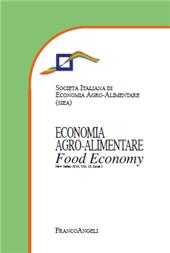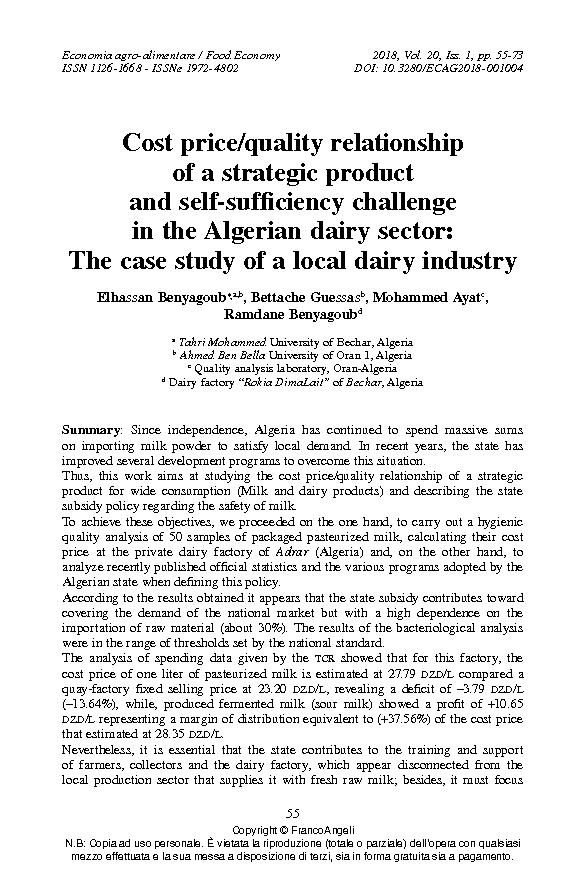Cost price/quality relationship of a strategic product and self-sufficiency challenge in the Algerian dairy sector : the case study of a local dairy industry
55-74 p.
Since independence, Algeria has continued to spend massive sums on importing milk powder to satisfy local demand. In recent years, the state hasoved several development programs to overcome this situation. Thus, this work aims at studying the cost price/quality relationship of a strategicuct for wide consumption (Milk and dairy products) and describing the state subsidy policy regarding the safety of milk. To achieve these objectives, we proceeded on the one hand, to carry out a hygienic quality analysis of 50 samples of packaged pasteurized milk, calculating their cost price at the private dairy factory of Adrar (Algeria) and, on the other hand, to analyze recently published official statistics and the various programs adopted by the Algerian state when defining this policy. According to the results obtained it appears that the state subsidy contributes toward covering the demand of the national market but with a high dependence on the importation of raw material (about 30%).
The results of the bacteriological analysis were in the range of thresholds set by the national standard. The analysis of spending data given by the tcr showed that for this factory, the cost price of one liter of pasteurized milk is estimated at 27.79 dzd/l compared a quay-factory fixed selling price at 23.20 dzd/l, revealing a deficit of -3.79 dzd/l (-13.64%), while, produced fermented milk (sour milk) showed a profit of +10.65 dzd/l representing a margin of distribution equivalent to (+37.56%) of the cost price that estimated at 28.35 dzd/l. Nevertheless, it is essential that the state contributes to the training and support of farmers, collectors and the dairy factory, which appear disconnected from the local production sector that supplies it with fresh raw milk; besides, it must focus on typical farms, which seem to be more productive than family small-sized farms.
These must come together and form cooperative, not only so as to be in the official circuit but also to be under a hygienic control system in order to avoid any kind of peril to consumer's health. [Publishers' text].
Is part of
Economia agro-alimentare : XX, 1, 2018-
Articles from the same issue (available individually)
-
Information
ISSN: 1972-4802
DISCIPLINES
KEYWORDS
- Pasteurized milk, fermented milk, cost price, dairy policy, dairy factory of Adrar



